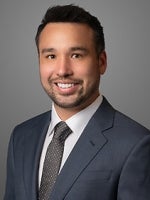As Congress grapples with the next tranche of COVID-19 legislation, one key issue that has remained at the forefront of the debate is whether, and to what extent, Congress will limit COVID-19 exposure lawsuits against businesses and non-profit organizations that remain operational during the pandemic.
The leading bill is entitled the “Safeguarding America’s Frontline Employees to Offer Work Opportunities Required to Kickstart the Economy Act,” or the “SAFE TO WORK Act” (S. 4317). If enacted into law, the bill would:
-
Limit liability for COVID-19 claims for nearly every private business in the United States, unless the plaintiff can prove that the business (1) “was not making reasonable efforts in light of all the circumstances to comply with the applicable government standards and guidance in effect at the time” of the claimed exposure to COVID-19; (2) was grossly negligent or willful in causing an actual exposure to COVID-19; and (3) the actual exposure to COVID-19 caused the plaintiff to suffer a personal injury.
-
Presume that a business made “reasonable efforts . . . to comply” if (1) in the face of conflicting guidance offered by two applicable governmental authorities, the business complied with any one of the conflicting standards; or (2) the business maintained a written policy on the mitigation of transmission or COVID-19 that complied with the applicable government standards and guidance.
-
Cover claims for exposure alleged to have occurred at any time between December 1, 2019 and October 1, 2024.
-
Eradicate the preponderance of the evidence (aka “more likely than not”) standard of proof for COVID-19 exposure claims, and replace it with the higher “clear and convincing evidence” standard.
-
Eliminate joint and several liability among multiple defendants and require proportionate liability in most cases.
-
Limit the availability and amount of compensatory and punitive damages awarded to COVID-19 exposure plaintiffs.
-
Preempt and supersede any contravening federal, state, or tribal law related to the recovery of personal injuries caused by actual, alleged, fear, or potential for exposure to COVID-19, unless those laws impose stricter standards for would-be plaintiffs.
-
Provide the federal courts with original jurisdiction over any COVID-19 lawsuit, and limit the scope of discovery in federal court.
-
Require COVID-19 plaintiffs to plead their legal Complaints with particularity.
-
Require every COVID-19 exposure plaintiff to identify all places and persons visited by the plaintiff and all persons who visited the plaintiff’s residence during the 14-day period before the onset of the first symptoms claimed to be caused by COVID-19, and the reasons why the plaintiff believes the other persons identified did not expose the plaintiff to COVID-19
-
Eliminate federal COVID-19 exposure class actions and require collective (“opt-in”) actions for multi-plaintiff lawsuits.
-
Limit medical liability for COVID-19-related services provided by a health care provider.
-
Make it easier for businesses to invoke the “direct threat” defense in public accommodation disability lawsuits.
There is little doubt that if passed into law, the SAFE TO WORK Act would be the most ambitious tort reform legislation effort by Congress in decades, if not of all time. While it is unclear which provisions of the SAFE TO WORK Act will ultimately be enshrined into law, the bill offers an insight into potential pandemic-related tort reform legislation of the future. The SAFE TO WORK Act is a comprehensive piece of proposed legislation that seeks to limit all three aspects of a lawsuit: procedure, merits, and relief.
As you are aware, things are changing quickly and there is a lack of clear-cut authority or bright line rules on implementation. This article is not intended to be an unequivocal, one-size fits all guidance, but instead represents our interpretation of where things currently and generally stand. This article does not address the potential impacts of the numerous other local, state and federal orders that have been issued in response to the COVID-19 pandemic, including, without limitation, potential liability should an employee become ill, requirements regarding family leave, sick pay and other issues.



 />i
/>i

